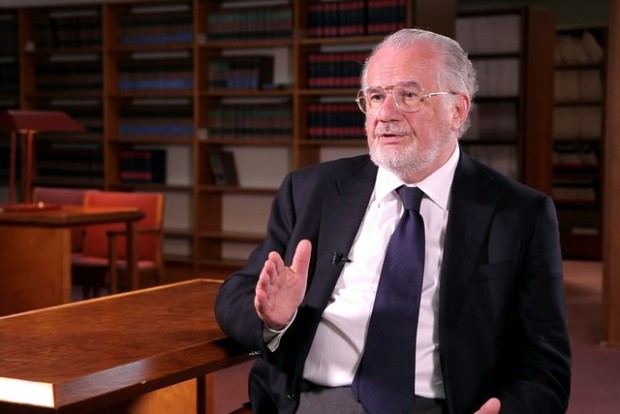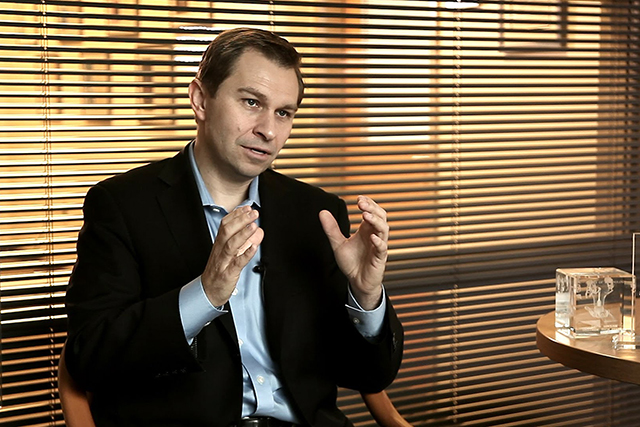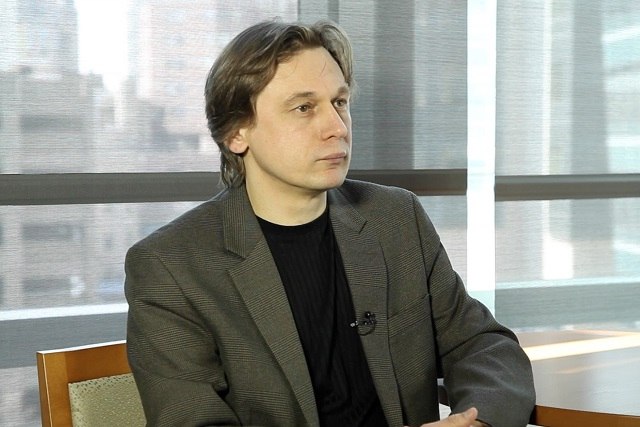Mechanisms of Antioxidants’ Functions
Biologist Angelo Azzi on the internal balance of oxidants and antioxidants, free radicals, and polyphenols
videos | August 6, 2015
How do antioxidants protect the body from free radicals? How and why are free radicals produced? Why can antioxidants be harmful in too large doses? These and other questions are answered by Tufts University Professor, Angelo Azzi.
Antioxidants – they are molecules which are able to scavenge free radicals, which are damaging for the organism. Some of these antioxidants are within the organism itself and we naturally produce them, and some are taken with the diet.
Let’s start from the first. They are enzymes, which are able to transform more aggressive species of radicals into less aggressive species and end up in neutral compounds which have no damage for the body. And I mention here superoxide dismutase, catalase, glutathione peroxidase as molecules which serve the goal of eliminating those free radicals, which are produced in the body by metabolism. Externally, the world is full of antioxidants. They are present in plants: in fruits, in vegetables. They are reaching all age groups, so they are called polyphenols in large amounts. This is a huge group of molecules which we’ll discuss in detail. Then there’s vitamin E, also antioxidant which has however additional properties and it can act also by gene regulation. We have ascorbic acid, also something that we have to take with a diet, because we are not able to synthesize it, also having antioxidants properties.
The important thing regarding the free radicals and antioxidant balance is that we do have production of free radicals in our body, which is needed to signal within cells events such as the cell has to grow or the cell has to stop growing.
This essential free radical production has to be kept, we don’t need to eliminate that. And internal system of antioxidant is very respectful.
The free radical production in a cell is essentially made by organelles like mitochondria. They produce superoxide O2−. By cell organelles, especially the cell membrane, where an enzyme which is called NADPH oxidase is present. Actually, there are five forms of this NADPH oxidase, which produce O2− radicals or H₂O₂ capable of influencing a number of reactions in their sense. These reactions are essential, we cannot eliminate them, because eliminating them means producing damage. So, nature is very careful in creating an internal balance of oxidants and antioxidants.
Now, when we go to the external world, there we have to be careful because some of those antioxidants that we can take in may be good up to a certain point, but if taking in too much quantities, too large quantities, they can interfere with those natural pathways of radical regulation that are essential for life.

But there are a number of other molecules which are present in nature, present in fruit, in vegetables, in wine — just to mention, resveratrol in wine, or catechins in wine, especially in tea, in green tea many catechins are present, epigallocatechin gallate — and those are very good antioxidants.
So you can take these molecules, test their efficacy in vitro, in a test tube to scavenge free radicals, and they are good. But the question is, when they are going to the body, are they working as free radicals scavenger or not? Now, all these molecules: we can mention resveratrol, we can mention epigallocatechin gallates, we can mention flavonoids present in chocolate, for instance. All these molecules are taken up in very small amounts. So small, that maybe they could be 1 or 2% of the amount present already internally in the body. So, in a way, having those free radicals scavengers, antioxidants introduced in the organism with the diet, would only give a little bit of 1% advantage on the top of what we have already in the background. So, they are taken in very small amounts, and when they are taken up, the body immediately reacts to them, trying to block antioxidant function of these molecules in two ways. One I’ve mentioned before, the polyphenols, the flavonoids have a lot of —OH groups, which are responsible for the antioxidant property of the molecule. When those —OH groups become blocked, methylated, and therefore the molecule is losing antioxidant properties. Additionally, there is an important system in the body, which is capable of eliminating foreign compounds, and it is a drug hydroxylating system: phase 1, phase 2 — foreign molecules are modified, so that they can be conjugated with groups which make them water soluble and easily eliminated by the urine or by the bile. So this system seizes the antioxidants and immediately tries to eliminate them from the body.
So, at the end, due to the fact that these molecules are taken up in very small amounts, that they are blocked in their antioxidant functions and that they are eliminated by the drug hydroxylating system, it ends up that so-called natural antioxidants, when introduced into the organism, do not produce any significant antioxidant effect.
Having said this, it does not mean that they don’t do anything, because some of them have traditionally shown in Chinese popular medicine and Indian traditional therapies that they do have effects, including resveratrol and a famous French paradox, by which drinking wine would prevent damage to the body, created that effect, ‘French diet’. They do something, but they don’t do something as antioxidants — they do something because they are molecules that go in particular targets in the body: receptors, signaling pathways of the body — and by regulating those signaling pathways they exert positive effects. So, summarizing this point, we can say: the antioxidants called polyphenols, flavonoids — of that group of molecules — may do some benefits, but not as antioxidant molecules. We can call them antioxidants, but they are simply compounds that act by different mechanisms. What is now the future for that — to understand how they work, how these molecules are able to produce beneficial effects without being antioxidants, and a lot of work is going on in this very direction.





























